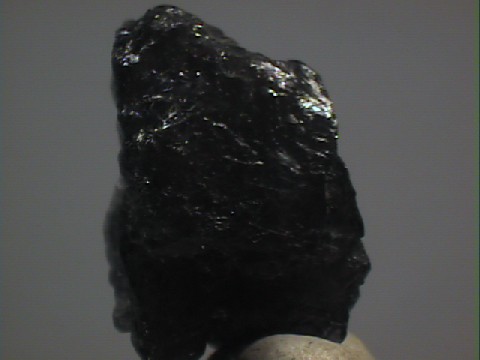 THE MINERAL CORDIERITE
THE MINERAL CORDIERITE
Cordierite is not a well known or popular mineral for mineral collectors.
However, its gemstone variety is well known and is rather popular among gemstone collectors and fanciers.
The gemstone variety of cordierite is called
iolite.
Its unusual blue-violet color is attractive and is compared to a light blue sapphire with a purplish tint.
It is the reason that cordeirite is sometimes called
"water sapphire."
One of the most notable characteristics of cordierite is its strong pleochroism, or color changing ability.
When viewed from one direction, the crystal or gemstone may appear blue or blue-violet.
But as the crystal or gemstone is rotated to another viewing direction, the color will appear yellowish gray to light blue.
Many other minerals are pleochroic however most have such a small color change that it is not noticable by the human eye.
Other minerals such as elbaite, show stronger pleochroism where changes in color shading can be discerned.
Only a few minerals such as cordierite and the
zoisite variety called
tanzanite are extremely pleochroic and it is very easy to see the color changes.
The strong pleochroism is the reason that cordierite and iolite are sometimes referred to by the synonym
dichroite a greek word meaning two colored rock.
Although cordeirite is actually trichroic the dichroic name has persisted.
PHYSICAL CHARACTERISTICS:
- Color is typically blue, violet, gray, brownish or colorless.
- Luster is vitreous.
- Transparency crystals are transparent to translucent.
- Crystal System is orthorhombic; 2/m 2/m 2/m
- Crystal Habits include rare prismatic crystals but is usually massive, or in compact grains embedded in metamorphic schists and gneisses.
Also found as pebbles and grains in alluvial deposits.
- Cleavage is poor in one direction.
- Fracture is subconchoidal.
- Hardness is 7 - 7.5
- Specific Gravity is approximately 2.3 (light)
- Streak is white.
- Other Characteristics: strongly pleochroic (displays the range of colors from blue-violet to gray or colorless), index of refraction is 1.52 - 1.57.
- Associated Minerals are almandine, corundum, andalusite, biotite and feldspars.
- Notable Occurrences include Sri Lanka; India; Burma; Madagascar; Middlesex Co., Connecticut and the Yellowknife area of the Northwest Territories, Canada.
- Best Field Indicators are hardness, lack of good cleavage, density, color and pleochroism.
 THE MINERAL CORDIERITE
THE MINERAL CORDIERITE


